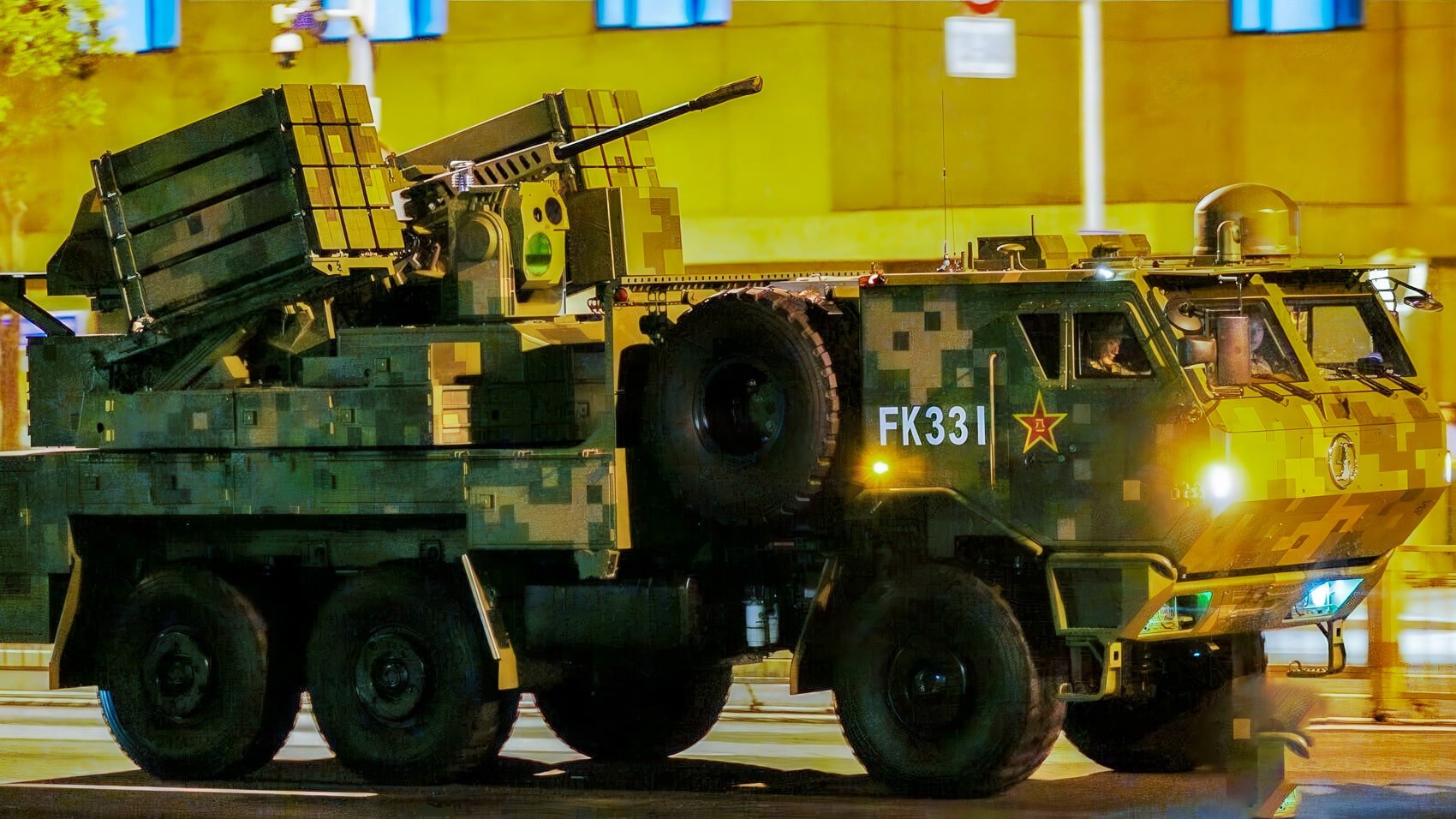China’s FK-3000: The Drone-Swarm Defense Revolution
China’s innovative FK-3000 air defense system is emerging as a potent tool against drone swarms, featuring advanced radar, jamming, and missile technologies designed to neutralize numerous small and agile aerial threats.
What is the FK-3000?
Developed by the China Aerospace Science and Industry Corporation (CASIC), the FK-3000 is a short-range air defense system (SHORAD) crafted specifically to counter unmanned aerial vehicles (UAVs), cruise missiles, precision-guided munitions, and even small helicopters. This system is equipped on a sturdy SX2220 6×6 wheeled platform, operable day and night under any weather condition, making it ideal for both military conflicts and urban security scenarios.
How Does It ‘Eat’ Drone Swarms?
The FK-3000 employs multiple layers of defense for optimal effectiveness:
- Missile Arsenal: It carries a diverse array of missile types to address various threats:
- Six long-range FK-3000/L missiles with formidable capabilities comparable to the FK-1000, enabling engagements up to approximately 22km.
- 48 micro-missiles (FK-3000/L Micro) with a 5km range and 600m/s speed, tailored for neutralizing small drones and swarms through infrared (IR) guidance. These ‘fire-and-forget’ missiles allow simultaneous targeting of multiple threats.
- Cannon: A 30mm Gatling-type cannon with an effective 4km range is perfect for intercepting close-in targets that manage to evade the missile defense.
- Electro-Optical Turret: Features sophisticated photoelectric and infrared targeting systems to ensure accurate engagement even when conventional radar is compromised.
- Phased Array Radar: Comprising four potent radar arrays, it utilizes millimeter waves to track ‘low, slow, and small’ aerial entities, precisely what modern drones encompass. This radar can concurrently track numerous targets, from minuscule quadcopters to swift platforms.
- Electronic Warfare: Built-in jammers effectively disable or disrupt incoming drones, adding a non-physical layer of defense.
Such a multi-faceted approach allows the FK-3000 to intercept, destroy, or redirect drone swarms effectively, earning its reputation as a ‘beast’ in aerial threat management.
Key Specifications and Features
| Feature | Specification / Details |
|---|---|
| Platform | SX2220 6×6 wheeled TELAR |
| Primary Missiles | 6 FK-3000/L (22km range), 48 FK-3000/L Micro (5km range, IR guided) |
| Cannon | 30mm Gatling, 4km effective range |
| Radar | 4 phased array radars, detects 150m to 30km, tracks hundreds of targets |
| Electro-Optical System | Multi-channel turret, EO/IR sighting |
| Engagement Range | 300m to 12-22km (missiles), up to 4km (cannon) |
| Operational Conditions | Day/night, all-weather, remote-controlled options |
| Electronic Warfare | Integrated jamming transmitter |
| Target Types | Drones (UAVs), cruise missiles, helicopters, cluster munitions, ammo |
| Simultaneous Engagement | Dozens of targets at once |
What Makes FK-3000 Different?
1. Designed for the Drone Swarm Age
Unlike traditional air defenses that focus on larger targets, the FK-3000 emphasizes defeating a multitude of *small*, *inexpensive*, and *plentiful* challenges—not just isolated high-value aircraft but potentially hundreds of coordinated drones.
2. Flexible and Fast Reaction
With its automated turret, “fire-and-forget” micro-missiles, and sophisticated radar, it can respond in mere seconds, adept at handling surprise swarm attacks or saturation strikes.
3. Hybrid Kinetic & Electronic Warfare
While older systems primarily relied on missile technology, the FK-3000’s integration of jamming capabilities enables it to disrupt drone control signals, often neutralizing threats without firing a shot.
Real-World Uses and Scenarios
- Battlefield Defense: Protects military convoys, bases, and command posts from reconnaissance drones, loitering munitions, and guided missiles.
- Urban Security: Capable of safeguarding cities, critical infrastructure, and public gatherings during peacetime from civilian drone intrusions or sabotage attempts.
- Border and Sensitive Area Protection: Rapidly deployable to border zones, nuclear facilities, airports, or any “no-drone zones.”
- Networked Operations: Can be integrated with remote vehicles and other defense systems for coordinated countermeasures.
Technology Highlights and Innovations
- Mass Target Processing: The radar system’s capacity to manage numerous targets showcases a new era in air defense, crucial as drone swarms become more expansive and advanced.
- Smart Ammunition: Anti-swarm UAV munitions are designed for efficiency, covering vast areas or adapting to the unpredictable flight paths of drones.
- Remote Control & Automation: Some installations feature remotely controlled turrets, reducing risks to personnel and enabling dynamic battlefield setups.
Case Study: FK-3000 in Action
Picture a scene straight out of a high-octane action movie: a swarm of hostile drones closing in on a command post at dusk. Within moments, the FK-3000’s radar locks onto the drones, micro-missiles shoot out to meet them, some drones are disrupted by jamming and crash, others are struck down by cannon fire, and the remainder is veered off course. The command post stays secure with minimal human intervention—a true demonstration of next-generation automated defense.
Expert Opinions and Global Impact
Analysts herald China’s FK-3000 as a significant advancement in counter-drone strategies, forecasting its exportation to allied nations and its potential to redefine both state and non-state drone deployment in future conflicts. Its modular construction and blend of kinetic and electronic defenses could establish it as a global benchmark for drone swarm resilience.
Will FK-3000 Change the Balance?
As low-cost, efficient drone swarms play increasingly prominent roles in conflicts (evident in regions like Ukraine and the Middle East), the FK-3000’s formidable missile reserves, automated targeting, and extensive jamming capabilities hint at a future where air defense systems evolve from simple missile launchers to comprehensive ‘swarm-eaters.’
Fun Fact & Pop Culture
The FK-3000, with its rows of micro-missiles and radar systems, has sparked creative comparisons on Chinese social media, likening it to an immense robotic insect zapper or the ultimate ‘umbrella’ against drones. Some enthusiasts jest that with such protection, even delivery drones would require stealth capabilities just to deliver pizza.
Final Thoughts
As drone technology swiftly advances, so too must the methods for its deterrence. China’s FK-3000 emerges as a dramatic answer to the challenges posed by drone swarms, paving the way for a new era in air defense, where the necessity for sophisticated networks and autonomous reaction systems becomes paramount.













